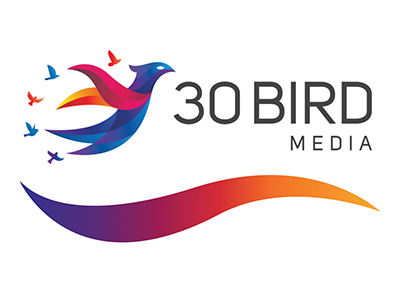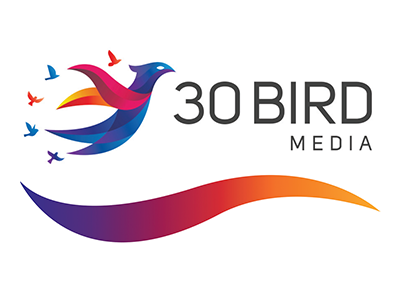 |
Strategic Decision Making: Decision Results (Instructor Guide) |
0.84 |
After implementing a decision, you should review the process you followed to reach it, regardless of the outcome. There are guidelines that you can use to review and learn from your decisions. You also need to be aware of the various pitfalls to avoid when learning from your decisions.
You can improve your decision making skills by examining a variety of other sources, such as the experience of people in your company and the decisions of other companies. You should not overlook these opportunities, because they will improve your decision-making skills, and help you to avoid similar mistakes in the future.
In this course you will learn to: identify the guidelines to follow and pitfalls to avoid when reviewing your decisions, and identify actions you can take to learn from the experience of others.
This Instructor's Edition of this course includes notes and suggestions to assist you in presenting the material, whether in an in-person classroom setting or as an instructor-led online or distance-learning course. It also provides you with the answers to questions found in mid-lesson activities, as well as in the quiz that concludes the course. |
 |
CWNP Certified Wireless Technician - Exam CWT-101 |
8.00 |
This entry-level certification (Certified Wireless Technician - Exam CWT-101) is offered by Certified Wireless Network Professionals, or CWNP, as part of a vendor-neutral wireless certification program.
According to CWNP, the Certified Wireless Technician (CWT) should be able to install APs based on a design document, configure the AP for initial operations and ensure connectivity, troubleshoot basic problems, and assist users in-person or through remote communications in problem resolution. Perhaps the most important skill is the ability to set up a WLAN client for connectivity, including SSID configuration, security settings, and other client adapter settings. |
 |
Odds & Endo: Part 1 |
1.50 |
Most entry-level providers agree that the topic of endocrinology is intimidating. We spend a good amount of time learning about diabetes mellitus, which is the most pervasive endocrine-related dysfunction that we see in the prehospital setting. We asked Dr. Jeremy Cushman to bring us to the next step. He does not discuss all of the disease states that the endocrinology world has to offer, but we do get a very good overview of some of the more common emergencies. We think you will enjoy his delivery and learning about one of the most misunderstood topics that we encounter at a basic level. Final Exam: This multiple-choice exam is designed to test your knowledge of the material you just reviewed. You have two attempts to gain an 80% or higher on this exam. Please take your time and answer each question carefully. |
 |
Managerial Leadership: Motivating Employees Through Change (Instructor Guide) |
0.50 |
Your organization’s vision was created to inspire and unite the members of the organization as they work toward achieving common goals. Change can distract employees from the vision because going through the change process can be intensely personal and emotional. Remembering the vision and its purpose can keep your employees focused on their role in the company.
In this course you will learn to: motivate employees through a change and prepare for difficulty, and overcome resistance and resolve conflict.
This Instructor's Edition of this course includes notes and suggestions to assist you in presenting the material, whether in an in-person classroom setting or as an instructor-led online or distance-learning course. It also provides you with the answers to questions found in mid-lesson activities, as well as in the quiz that concludes the course. |
 |
Social-Emotional Learning, Character Building & Enhancing Quality |
2.00 |
By the end of this course, you will be able to:
Strengthen your understanding of the social-emotional learning and character building that expanded learning programs support.
Be able to articulate what social-emotional learning and character development looks like in children and youth.
Identify the connection between quality standards and social-emotional learning and character development. |
 |
Food Allergy Basics: Symptoms and Triggers |
1.00 |
Welcome to Food Allergy Basics: Symptoms and Triggers. This course identifies the symptoms and triggers of food allergies.
Course Learning Objectives:
- Define food allergy.
- Identify the foods that cause 90% of all food allergies.
- List the symptoms of food allergies. |
 |
Food Allergy Basics: Emergency Response |
1.00 |
Welcome to Food Allergy Basics: Emergency Response. This course is focused on how to use a Food Allergy and Anaphylaxis Emergency Care Plan to care for a child with a food allergy.
Course Learning Objectives:
- Explain the correct use of the Food Allergy and Anaphylaxis Emergency Care Plan.
- Identify the six rights of medication administration. |
 |
Safe Infant Sleep: Safe Sleep Policy |
1.00 |
This course is focused on safe infant sleep policies, and how to communicate best practice for safe sleep with the families of infants in your care.
Course Learning Objectives:
Explain the purpose and contents of a safe infant sleep policy.
Explore strategies for communicating with families about safe infant sleep practices. |
 |
Strategic Decision Making: Decision Options (Instructor Guide) |
1.17 |
Before you begin generating options for a business decision, you should take time to understand the decision you’re going to make. You can increase and improve your options by using available techniques and by avoiding pitfalls. When planning to make a decision, you might generate other options, and compare them without considering which approach you should use to make the decision. By failing to consider your approach, you might select one of the options without considering all the necessary information. This lack of information can prevent you from recognizing and considering some of the best options.
In this course you will learn to: identify the techniques for generating options and improving the quality of your options, and evaluate your options and identify the techniques for making a final decision.
This Instructor's Edition of this course includes notes and suggestions to assist you in presenting the material, whether in an in-person classroom setting or as an instructor-led online or distance-learning course. It also provides you with the answers to questions found in mid-lesson activities, as well as in the quiz that concludes the course. |
 |
CWNP Certified Wireless Specialist - Exam CWS-101 |
8.00 |
Certified Wireless Specialist - Exam CWS-101 covers the fundamentals Wireless Fidelity (Wi-Fi) technologies for wireless communications. The student will learn the basics of how Radio Frequencies (RF) are utilized by Wi-Fi with hardware and software to create wireless local area networks (WLANs). Upon completion of this course, the student will have the knowledge required for the CWS-101 exam and CWS certification.
This vendor neutral course assumes that the student has a basic knowledge of using wireless computing devices and wireless networks. The exam objectives are marked throughout the course, with applicable acronym and objective indexes. |
 |
La Creatividad (Spanish) Creativity |
0.50 |
En este curso, aprenderá sobre la creatividad, incluido qué es, cómo fomentarla y cómo utilizarla para una colaboración positiva.
In this course, you will learn about creativity, including what it is, how to encourage it, and how to utilize it for positive collaboration. |
 |
Food Safety Practices (CDA 1) |
2.00 |
Safeguarding young minds and bodies is paramount in child care, and food safety plays a crucial role. This course empowers both center and home-based practitioners with vital knowledge and skills to combat foodborne illness (FBI), prevent choking hazards, and minimize other food-related injuries. Discover comprehensive guidelines for implementing effective food safety practices, ensuring you cultivate a healthy and secure environment for every child entrusted to your care. |
 |
Infectious Diseases: Causes and Symptoms |
1.00 |
An infectious disease is an illness that is caused by organisms such as bacteria, viruses, fungi, and parasites. Many of these organisms live in or on our bodies, and are normally harmless. But under certain circumstances, they can cause disease.
Course Learning Objectives:
- Describe infectious disease, and the ways in which germs that can cause infectious disease are spread.
- Identify common symptoms of infectious diseases, and why young children are vulnerable to infectious diseases. |
 |
Infectious Diseases: Environmental Management |
1.00 |
This course is focused on reducing the risk of infectious diseases in early care and education environments.
Course Learning Objectives:
List environmental management strategies for reducing the spread of germs that cause infectious disease. |
 |
Infectious Diseases: Daily Health Check |
1.00 |
This course is focused on the daily health check, and how it relates to policy guidelines about whether or not children with symptoms of infectious diseases can participate in program activities.
Course Learning Objectives:
Describe the elements of a daily health check.
Discuss how daily health checks relate to policy guidelines about whether or not children with symptoms of infectious diseases can participate in program activities. |
 |
STEM and Supportive Practices |
1.00 |
STEM is an intentional, integrative approach to teaching and learning that can occur across all knowledge areas; it is not a specific curriculum. The STEM approach focuses on providing opportunities for students to explore and develop a comprehensive set of concepts, competencies, and thinking skills.
In this course, we’ll see how the Supportive Practices found in Learning Standards for early childhood promote the development of STEM concepts, competencies, and thinking skills.
Course Learning Objective:
- Use the supportive practices to promote the development of STEM concepts, competencies, and thinking skills. |
 |
Strategic Decision Making: Preparing to Make Decisions (Instructor Guide) |
1.50 |
In this course you will learn to: identify the factors that influence the outcome of a decision, and follow the steps of the decision-making process, define your decisions appropriately by establishing objectives, identify the problems decision frames can present, and the actions you can take to understand decision frames, and identify the guidelines for avoiding the problem of overconfidence, and describe the techniques for managing uncertainty.
This Instructor's Edition of this course includes notes and suggestions to assist you in presenting the material, whether in an in-person classroom setting or as an instructor-led online or distance-learning course. It also provides you with the answers to questions found in mid-lesson activities, as well as in the quiz that concludes the course. |
 |
Combating Sexual Harassment in the Workplace (Spanish) (Corrections) |
0.75 |
En los últimos años, el tema del acoso sexual en el lugar de trabajo se ha convertido en el centro de atención nacional, trayendo consigo una renovada conciencia sobre la naturaleza grave e inaceptable de estas acciones y las graves consecuencias que conllevan.
Según la Ley del Estado de Nueva York (vigente en octubre de 2018), todos los empleadores del estado deben establecer una política de prevención del acoso sexual que incluya capacitación anual de conformidad con la Sección 201-G de la Ley Laboral.
Este curso fue desarrollado por CypherWorx, Inc. en alineación con los materiales de capacitación desarrollados por el Departamento de Trabajo y la División de Derechos Humanos para superar los estándares requeridos por el estado de Nueva York.
A través de este curso, los alumnos: Obtendrán una mejor comprensión de lo que se considera acoso sexual; Aprenda cómo denunciar el acoso sexual; y Obtenga información sobre las opciones de informes externos.
Al completar este curso: Comprenderá mejor lo que se considera acoso sexual; Aprenderá cómo reportar el acoso sexual; Aprenderá sobre las opciones de informes externos. |
 |
Cross-Cultural Business Communication: Differences In Communication (Instructor Guide) |
1.00 |
When communicating with people of another culture, it is important to be aware of the person’s level of active participation in a conversation. In some cultures, highly active participation is the norm, while other cultures dictate a more passive involvement.
The exchange between people engaged in communication demonstrates conversational involvement. In any culture, a message must have both a sender and a receiver. In cultures with high conversational involvement, the receiver would send verbal and nonverbal cues, such as eye contact, nodding, and interjections, such as "I’m listening" or "Tell me more." In cultures with low conversational involvement, receivers would adopt a passive posture, perhaps staring at the ground with hunched shoulders, and would simply absorb the message without offering cues on whether they are listening or not.
In this course you will learn to: identify the differences in verbal communication across cultures, and improve your nonverbal communication skills by understanding the differences in gestures and expressions that vary across cultures.
This Instructor's Edition of this course includes notes and suggestions to assist you in presenting the material, whether in an in-person classroom setting, or as an instructor-led online or distance-learning course. It also provides you with the answers to questions found in mid-lesson activities, as well as in the quiz that concludes the course. |
 |
Growth and Development of Infants and Toddlers (CDA 1) |
2.00 |
A family child care early learning program that supports the growth and development of infants and toddlers needs nurturing caregivers, a healthy and safe environment, good relationships between family and caregiver, and appropriate activities to offer good quality care. This takes planning and knowledge of the growth and development of infants and toddlers. Find ways to enhance your family child care environment and build quality relationships with the infants and toddlers in your care.
This course is designed to be part of a Child Development Associate (CDA) Credential™ curriculum. It covers CDA Subject Area 1, Planning a Safe and Healthy Environment. This course can also be taken as a stand-alone learning event, or as part of a broader early childhood education curriculum. |
 , ,  |
Dance for Joy: Confident, Calm, and Compassionate |
1.00 |
This module from Dance for Joy will provide teachers with resources and activities that can be used and modified to support physical, mental, social, and emotional development in young children.
This course covers 5 activities: Tickle the Sky, Tapping, Every Little Cell, We are One, Scoop up the Universe. |
 |
Development and Characteristics of Learners for Teachers |
1.00 |
Development and Characteristics of Learners will assist you in fostering a solid understanding of how children develop and the disability categories that may impact their learning. This course will also help you gain invaluable insight into ways you can support children and meet their needs. |
 |
Dance for Joy: Movement, Music, and Rhyme |
1.00 |
This module from Dance for Joy will provide teachers with resources and activities that can be used and modified to support physical, mental, social, and emotional development in young children.
This course covers 5 activities: I Touch My Nose, I Touch My Toes, Hold Yourself Tight, Wake Up Right, Reach One Way, Reach the Other, Locomotor Freeze Dance, Salt and Pepper Dance. |
 |
The Dignity for All Students Act (DASA) for Administrators |
1.50 |
Welcome to The Dignity for All Students Act (DASA) course. This course is designed for anyone who works in a school. It is just one of the many K-12 courses we offer. This course will help you develop new knowledge about students and will help you understand how DASA is implemented within schools. |
 |
Organizational Communication: Relational Context and Organizations (Instructor Guide) |
0.75 |
The relational context of a communication exchange includes the circumstances, within an organization, that necessitate this exchange between employees. A number of factors affect the relational context, including the status of the employees within the organization, their motivation, and their relationship with other employees. All communication within an organization depends on the intent of the participants.
In this course you will learn to: identify the relational context and the factors that influence it, and identify the different personality types, and develop individual-organizational relationships.
This Instructor's Edition of this course includes notes and suggestions to assist you in presenting the material, whether in an in-person classroom setting, or as an instructor-led online or distance-learning course. It also provides you with the answers to questions found in mid-lesson activities, as well as in the quiz that concludes the course. |




















 ,
, 





